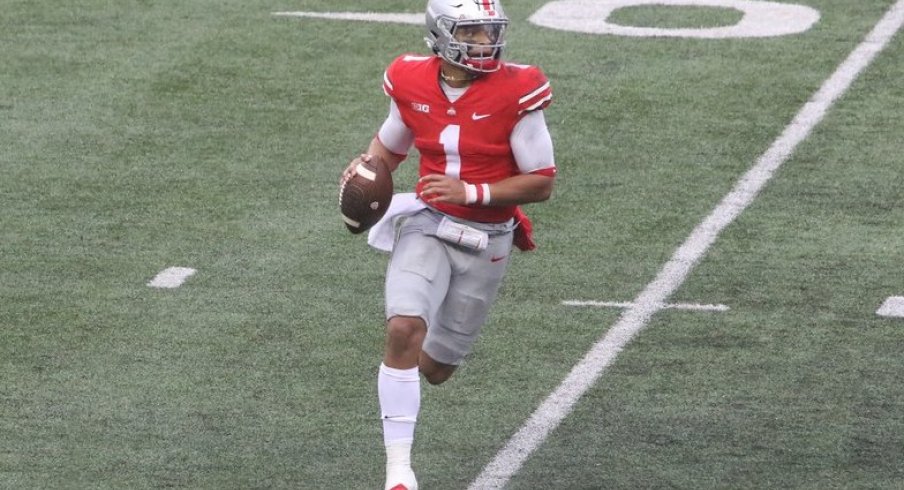"With the third pick in the 2021 NFL Draft, the San Francisco 49ers select..."
After a season unlike anyone at the pro and collegiate levels have experienced, a handful of NFL franchises will still leave next month's festivities in Cleveland feeling as though they've landed the future face of their organization. This year's crop of quarterbacks appears to be one of the best in years, with as many as five expected to come off the board within the first eleven picks.
While Trevor Lawrence is already looking at houses in Jacksonville and Zach Wilson appears destined to make the seamless cultural transition from Provo, Utah to New York City, the San Francisco 49ers shook up the league last Friday by executing a blockbuster trade with Miami to move up to the third pick. Many around the league expected the Bay Area's lone organization to make a change at QB this offseason, but this trade makes clear its intention to do so via the draft.
From almost the moment the trade was announced, the rumor mill heated up with guesses of which of the three remaining prospects had caught the eye of 49ers GM John Lynch and head coach Kyle Shanahan. While many had been connecting Alabama's Mac Jones with the franchise, others believe the team's interest is in North Dakota State's Trey Lance.
While there are reasons to believe both players might find success in Silicon Valley, it's hard to deny how well Justin Fields would fit into Shanahan's system once one looks at the film of Ohio State's star signal-caller.
Upon taking over the program two seasons ago, Ryan Day began incorporating a number of elements from the NFL, reinventing the Buckeye offense to look far more like Shanahan's than the classic Urban Meyer Power-Spread that had become synonymous with the program. While Fields still ran the occasional zone-read from a shotgun set, the Buckeyes leaned on a wide zone running game that stretched the defense horizontally.
This scheme was, of course, made famous by Shanahan's father, Mike, while leading the Denver Broncos in the 1990s, and remains the foundation of the family's game plans today. After apprenticing under his dad and members of his coaching tree, like Gary Kubiak, Kyle eventually landed coordinator positions in Cleveland and Atlanta, where he made his own name by leading the high-flying Falcons offense to the Super Bowl in 2017.
While that unit was led by QB Matt Ryan and star wideout Julio Jones, running back Devonta Freeman earned a Pro Bowl nod thanks to the same, wide zone scheme (known as Wanda in Shanahan's playbook) that is just as effective today as it was 25 years ago.
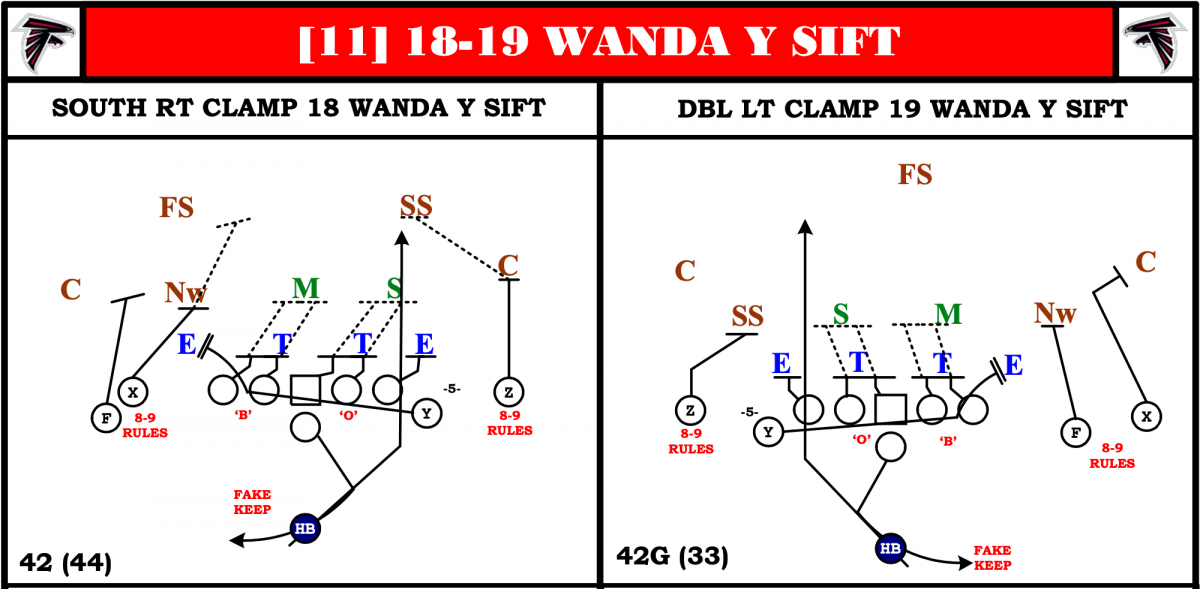
Upon taking the 49ers head coaching job the following season, Shanahan brought his full playbook with him and led that team to the Super Bowl in his third year. While the 49ers were leaning on that off-tackle zone running game to reach the postseason, however, Ohio State was doing the same with Fields taking the snap.
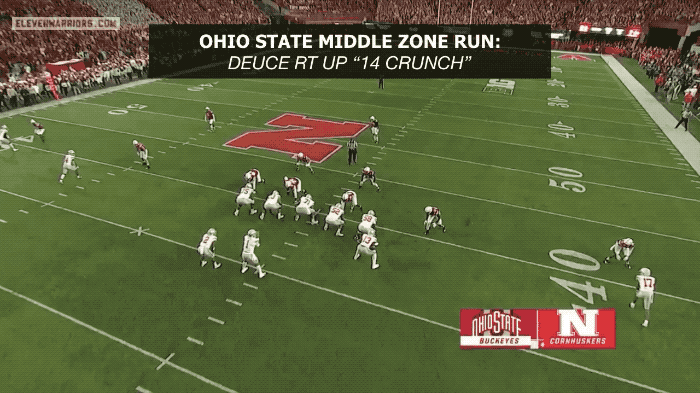
As the transfer from Georgia became more comfortable in Columbus, he also began operating from under-center far more often, showing NFL scouts that he possessed the fundamentals to easily transition to a pro-style system. Fields wasn't just prepared from the standpoint of his mechanics, though, as Day's playbook has a great deal in common with Shanahan's.
Both coaches bucket concepts together based on the types of plays, with Shanahan's playbook organized as follows:
- Runs
- Quick passes (3-step drop)
- Dropback passes (5-7 step drops)
- Play-action passes
- Movements (bootleg passes)
- Screens
Such an arrangement in itself is not unique, especially at the NFL level. Within each grouping, though, we begin to see the real symmetry between Shanahan's offense and the one Fields led in Columbus.
Quick Passes:
The very first pass concept Shanahan installs each training camp is a version of Spacing:
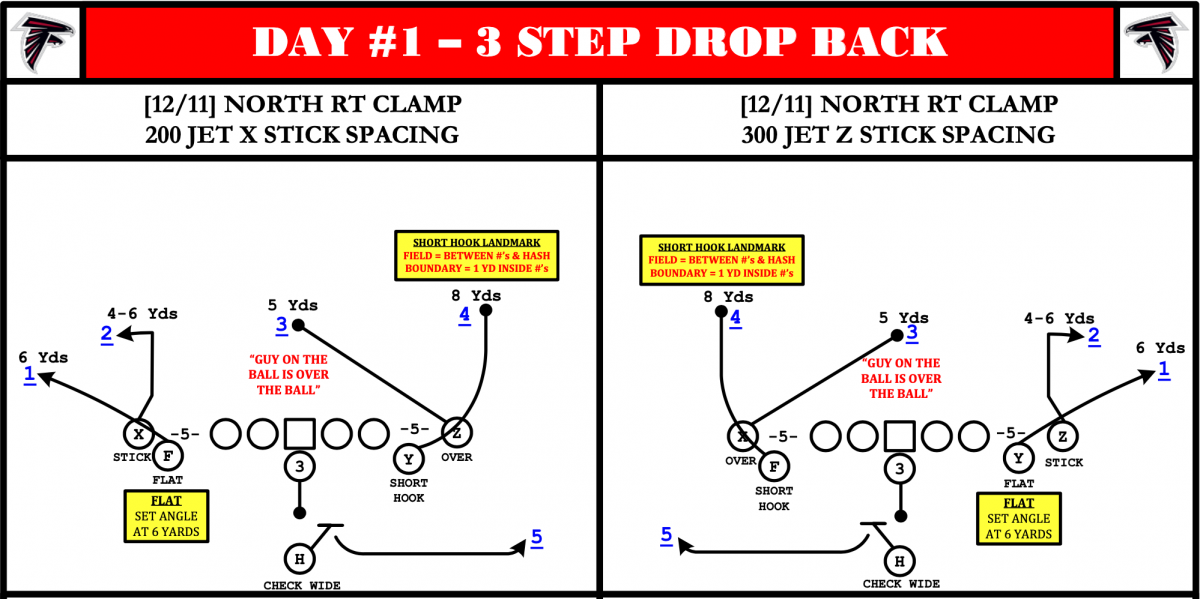
While it incorporates elements of the Air Raid Stick concept, the play is designed to find seams in a zone defense with five routes stretching out the underneath defenders.
At Ohio State, Day runs a version of this play known as Scatter, which is nearly identical and allowed Fields to pick up easy yards when needed. Three curl routes work the defense from hash to hash while two receivers flare out toward the sidelines.
Dropback passes (5-7 step drops):
While many offenses at the NFL level have adopted the RPO, the 49ers don't incorporate such options very often. But unlike many other West Coast Offense disciples, they also don't identify and read a single defender in most passing situations, either.
Rather, Shanahan asks his quarterbacks to progress through a series of reads, often reading deep-to-short or from one side of the field to the other. Such an ask is quite familiar to Fields, who, despite the uninformed narratives saying otherwise, regularly worked through multiple options while wearing the Scarlet and Gray.
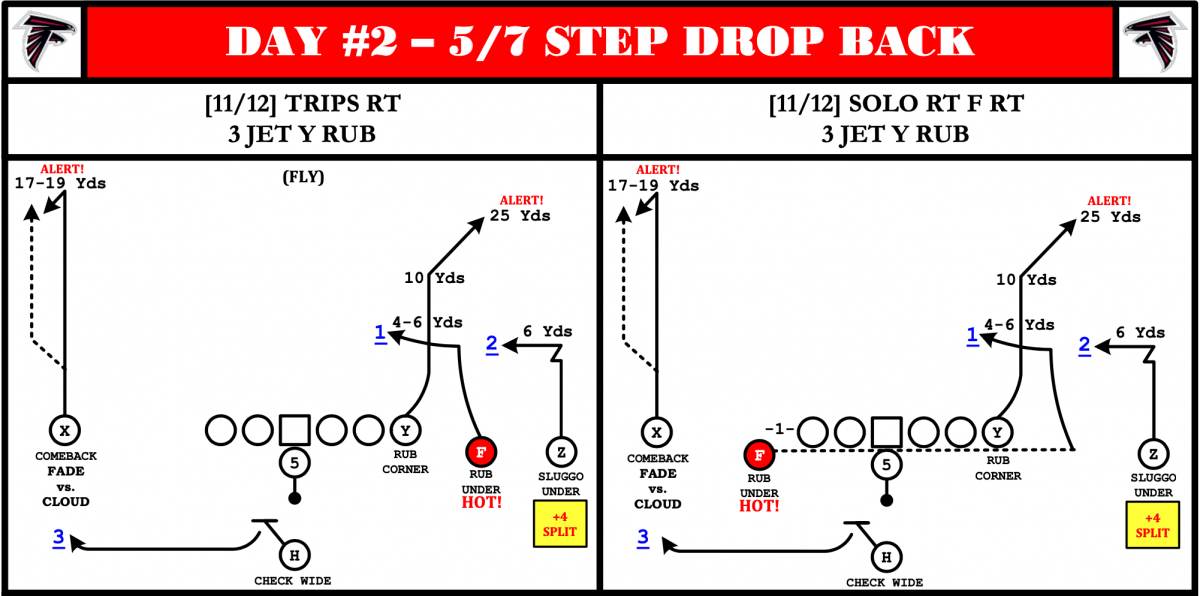
For example, Shanahan likes high-low stretches like his Rub concept (also known as Double China in other systems) which has the #3 receiver inside run a deep corner route with two inside-breaking routes beneath it. Though the corner doesn't often come open, Fields adeptly recognized it before the snap and delivered a strike.
Play-action passes:
The defining element of Shanahan's offense is his ability to threaten defenses with the run, only to take shots downfield as defenders begin creeping up. Anyone who has watched Ohio State in the past two seasons knows that was the program's calling card as well.
Building off the same action seen in the Y-Sift (what Ohio State calls Crunch) example above, Shanahan's quarterback looks downfield as the safeties bite on the run action, creating a three-man, deep-to-short read along one side of the field.
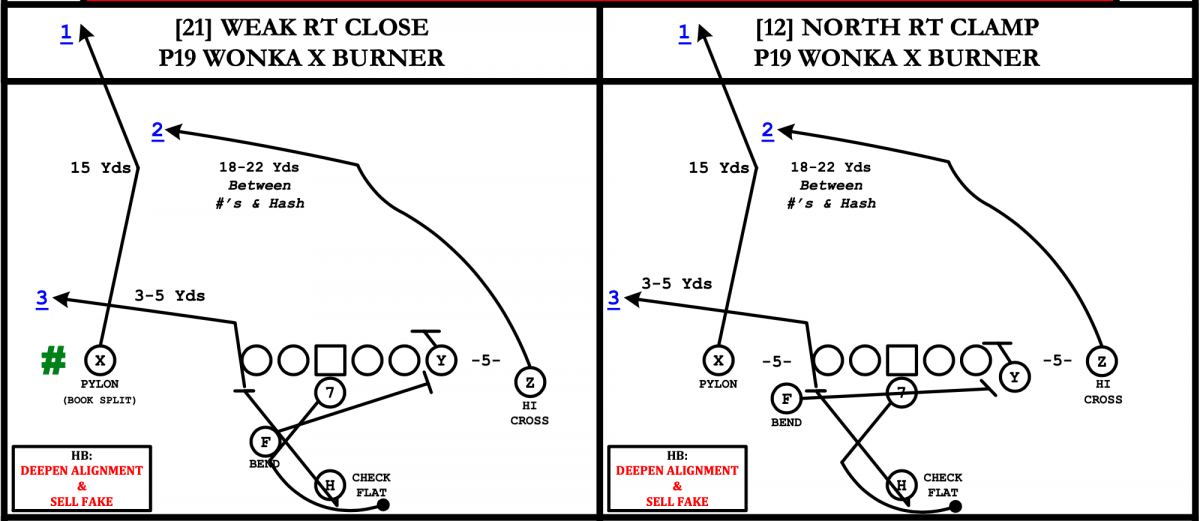
This is one of many plays that Justin Fields has already run with great success as a Buckeye, working through his progressions and hitting Garrett Wilson and Chris Olave on many occasions.
Movements:
What sets the Shanahan coaching tree apart from other West Coast Offenses is the use of bootleg rollouts off wide zone run action. While many teams will run the ball in hopes of setting up deep throws off a fake handoff, the lateral movement created by the Shanahan run game creates easy throws in the opposite direction - as long as the quarterback is capable of throwing on the move.
To fans of the Browns, Vikings, Titans, and Packers, this strategy surely sounds familiar, as descendants of the Shanahan tree such as Kubiak, Matt LaFleur, and Kevin Stefanski revived each offense with the same philosophy in recent seasons. While the effectiveness of the system has led some to question the talents of the quarterbacks who play in them, the ability to throw downfield while on the run is a critical skill required for the scheme.
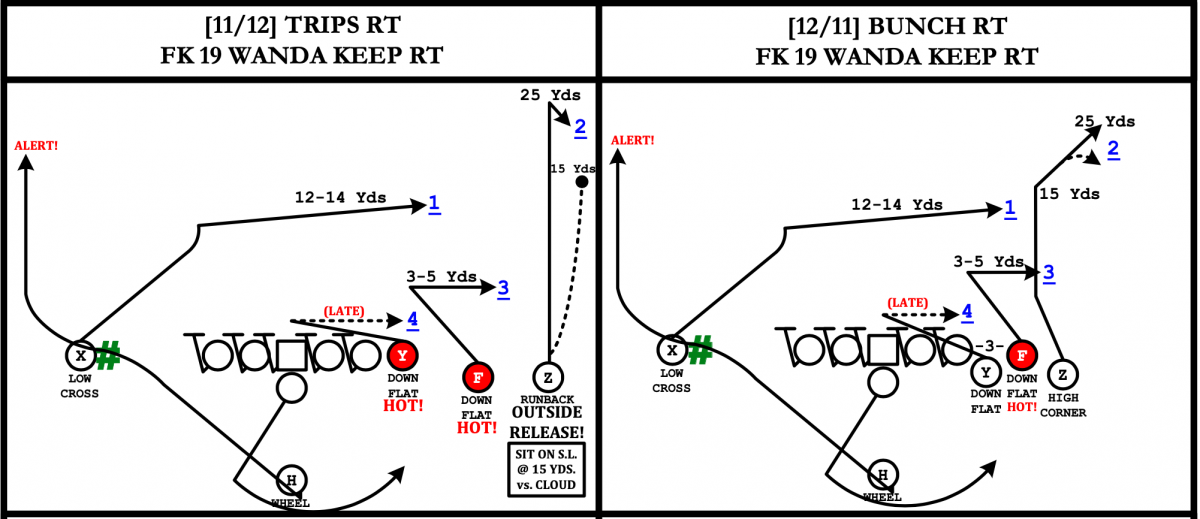
Being a great athlete, Fields was capable of buying time for his receivers to separate before delivering on-target strikes.
Screens
Like the Buckeyes, the 49ers use screen passes as complementary pieces in their game plans and don't feature a ton of exotic varieties. However, they provide a necessary release valve when teams begin blitzing in hopes of getting to the quarterback as he waits for deep routes to come open.
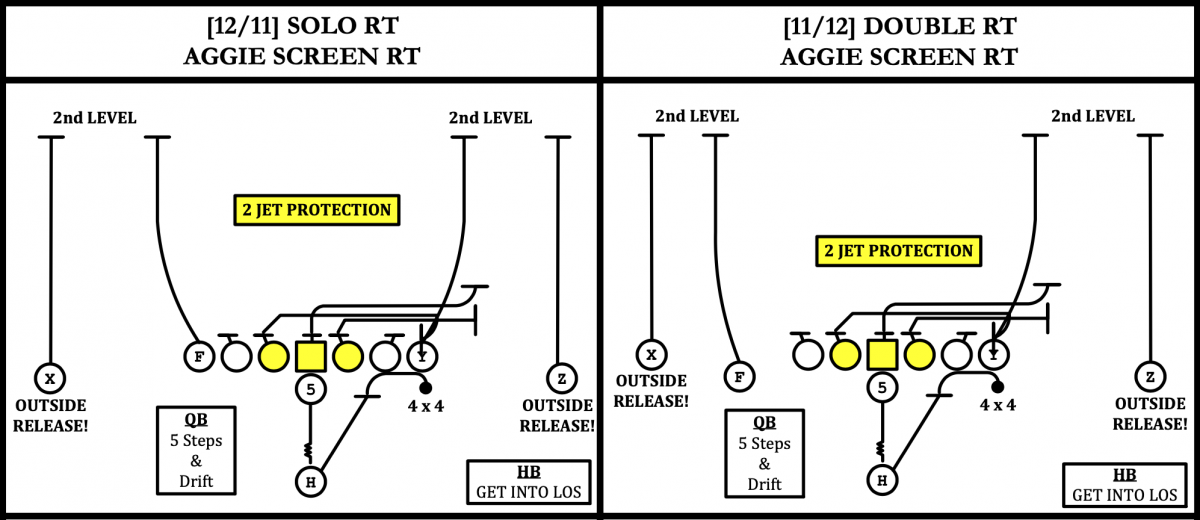
"Slow screens" as they're often called, take time, with linemen releasing downfield to lead the runner downfield after the catch. Given that these plays are often called when expecting a blitz, it means that the QB isn't simply getting rid of the ball like a quick bubble to the slot receiver.
Rather, the quarterback must have the ability to buy time and 'drift' away from the play long enough for the back and lead blockers to set up the screen outside the pocket, then throw an accurate ball in the face of an oncoming rush without their feet set.
Needless to say, Fields isn't the only prospect in this draft capable of succeeding in Shanahan's system. Lance features many of the same athletic traits and spent his collegiate career in a system also quite similar to that of the 49ers. Jones, meanwhile, has shot up draft boards as more pro scouts see him up close, though Steve Sarkisian's RPO-heavy approach had far less overlap.
Fields has had the benefit of playing in a system that is closer to what he'll be asked to do at the professional level than many give him credit for.
"Justin's been exposed to a lot of the passing game," former NFL QB and current Elite 11 head coach Trent Dilfer told the Ryen Russillo Podcast when asked about Fields' time working with Day and the rest of the OSU coaches. "He's not going to go into the NFL and say, 'Oh, I've never done that. I've never seen this before, what is this concept?' They've actually introduced him to a lot of passing concepts and I think that's going to serve him well."
Time will tell whether or not the 49ers believe that to be true, but it's hard not to see how well he'd fit in with one of the NFL's most organized offenses.
